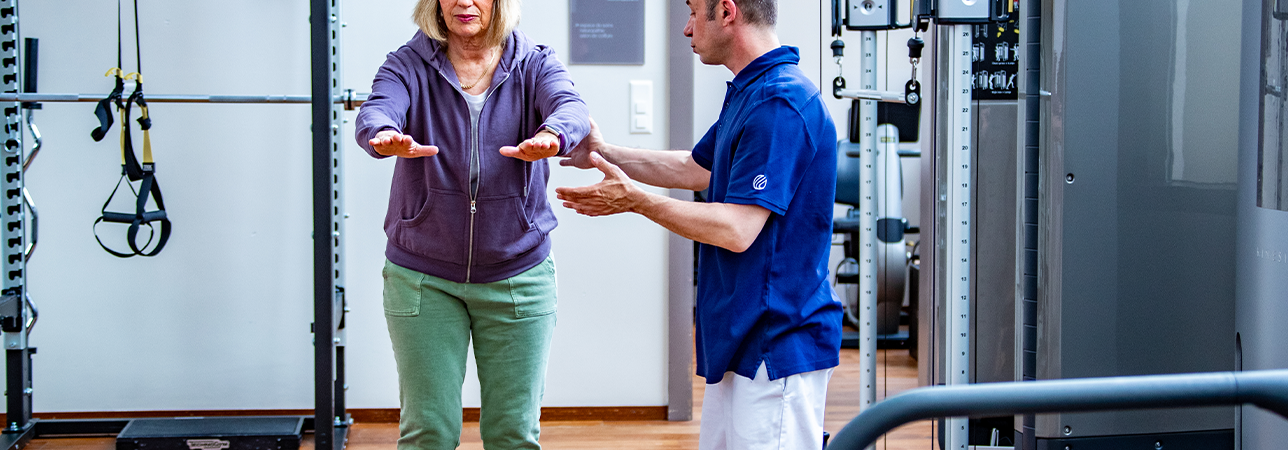
Cervical spondylotic myelopathy is a gradual pathological change in the spinal cord of the cervical spine, which often goes unnoticed until the later stages. It can be the result of cervical spinal stenosis and is often hereditary. Herniated discs or other degenerative changes in the cervical spine can also cause or contribute to the disease.
Cervical spondylotic myelopathy usually occurs between the ages of 50 and 70.
The most common cause of this disease is the narrowing of the spinal canal that occurs with ageing. However, it can also occur in connection with other diseases, such as chronic polyarthritis (a chronic inflammatory autoimmune disease) or Bechterew’s disease (an incurable disease that causes stiffening of the spine). Other possible causes include injuries, inflammation or tumours in the spine.
The following symptoms may occur with cervical spondylotic myelopathy:
In order to ensure that the symptoms described are due to cervical spondylotic myelopathy and not some other condition, various diagnostic tools are used. These include a neurological exam, X-ray, MRI or CT scan, and electrophysiological tests.

If the spondylotic myelopathy or spinal stenosis is still in its preliminary stage, conservative treatments can provide pain relief.
Conservative step-by-step therapy may include the following treatments:
If neurological disorders arise or important bodily functions are impaired, such as bladder function, then surgical intervention is required. In this scenario, there may even be an indication for emergency surgery.
Depending on the patient’s condition, there are up to six different surgical methods available. In the course of the diagnostic testing, it is determined whether the narrowing of the spinal canal is more from the front or from the back. The procedures differ accordingly. For example, it may be that just the constriction needs to be corrected; there may also be cause to use a cage, or stabilisation of the vertebral bodies may be necessary.
After surgery, rehabilitation is always required, which primarily comprises a specialised course of physiotherapy. In cases where signs of paralysis have resulted in neurological problems, neurological rehabilitation will be required.
This depends on how advanced the disease was by the time the surgery could be performed. Damage to the spinal cord takes longer to heal and, unfortunately, often cannot be completely reversed.
Narrowing of the spinal canal can compress the spinal cord and lead to neurological disorders. It is generally very painful. Cervical myelopathy is an insidious and usually painless condition, but it is highly dangerous as it can cause permanent damage to the spinal cord.